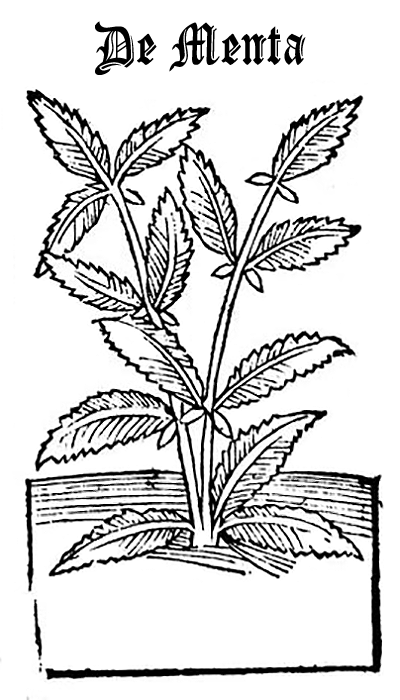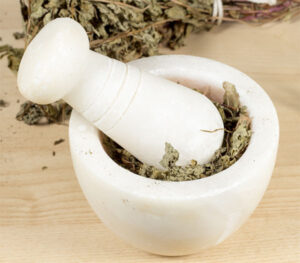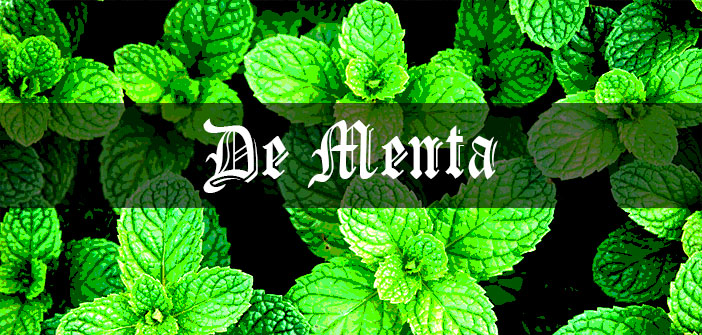Looking for grow your own tips? These ones are between one and two thousand years old, passed on from the ancient Greeks, Romans and Persians. They were collated in 1306 by an Italian called Pietro Crescenzi in his book, the Ruralia Commoda. These tips have been translated into modern day English from Latin and Italian exclusively for Grow Like Grandad. If you’d like to know more about the background to this translation project see here.
[Note. my comments are displayed in red below]
Mint (De Menta)

Mint is hot and dry in the second degree [contraction of tissues], and comes in three species. One is domesticated, its proper name is ortolano [author’s unknown local species] and it warms and comforts moderately. The other one is wild mint, properly called mentastro [spearmint], and this one warms more. And there is another type, which has longer, wider and sharper leaves, and this is the menta romana [pennyroyal / mentha pulegium] or saracinesca, also commonly called santamaria herb, and this one is more diuretic than the others [no idea but not feverfew]
Domesticated mint is a herb that multiplies itself easily, and comes out of the ground and grows rapidly; and if its stem is bent down into the earth and is covered by earth, it changes and and turns into a root; and soon comes out and it sprouts, and it is more suitable as a food rather than a medicine; and when green and dry it is of great efficacy. However, it dries out in a shady place, and is storable very well for the whole year; and it has virtues of consuming and dissolving, thanks to its qualities and its strong comforting aroma.
Medicinal Mint Uses:
Against the stench of the mouth, and the rottenness of gums and teeth, wash the mouth and gums with the vinegar in which the mint will be cooked. Then rub them, either with dry mint powder, or with dry mint.
In order to stimulate the appetite, when this is impeded by cold humors present in the mouth of the stomach, make a sauce with vinegar, mint and a bit of cinnamon or pepper. Against vomit, caused by a lack of retentive virtues or by a cold, cook the mint in briny water and vinegar, dip a sponge into it and then put it on the mouth of the stomach; and the infirm shall also eat this cooked mint.

Against syncope and debility, whether with fevers or without, or with matter (that is to say with humors), or due to any other reason, mash the mint and, if the sick person is without fever, put it in a bit of vinegar and wine; if with fever, only in vinegar. And put roasted bread in it and leave it there until it becomes soft, and then put it at the nostrils, and rub lips, teeth, gums and temples, and tie it up onto the pulsating veins of the temple and of the arms. And again, shall the sick person chew it, and swallow its humor.
Against milk solidification [when breast feeding], make small bundles and cook them in wine and oil, and then smear it on the breasts. And know that, whenever any medicine is given against venom, it must be given with its own juice, or, if in case you do not have the juice, with the wine in which it will be cooked. Against venom, only take the juice of the menta romana [pennyroyal / mentha pulegium], or the wine in which it will be cooked, or else its juice mixed with honey, and it is of great effect.
It is also good against the obstruction of the spleen, of the liver, and of the urinary tract, for cold humour or for humour without fever. Also, when given with honey, its juice kills the lombrici [intestinal worms]; and when distilled in the ears, it kills worms. When cooked in wine and oil and then smeared, it sorts the hardness of cold apostemes [abscesses].
Also, cook the mentastro [spearmint] in wine along with carex and sage, and give the wine of the decoction to the patient against cold cough. Furthermore, Also its warm poultice warms up, cleanses and purges the cooled uterus. Put in a bag, its powder reduces the cold rheum of the head [runny nose]. Note that menta romana and ortolana can be swapped.
The four degrees of ancient medical herbalism – click to enlarge[hr gap=”5″]
That concludes this translation of Latin and old Italian text from the Ruralia Commoda. Stay tuned for the forthcoming herb and vegetable translations over the coming days and keep an eye on #MedievalGrowYourOwn on Twitter.




